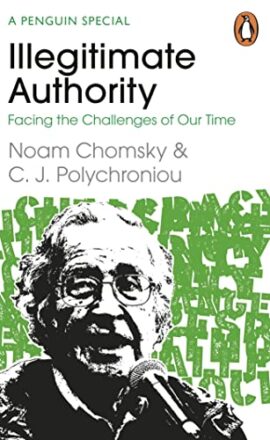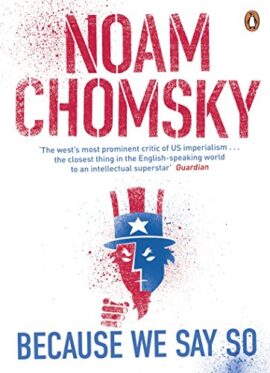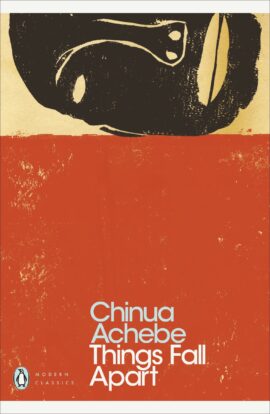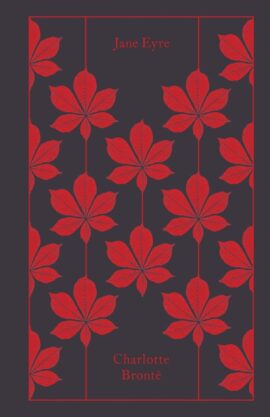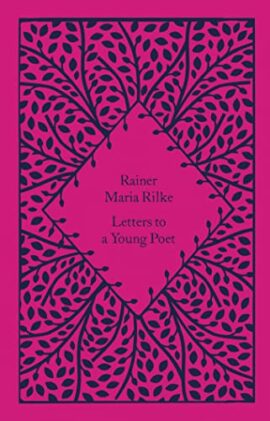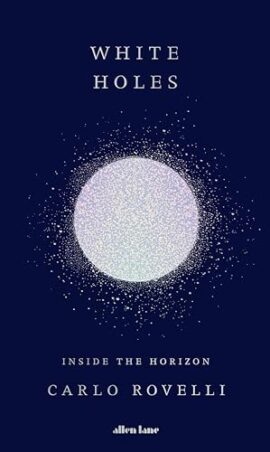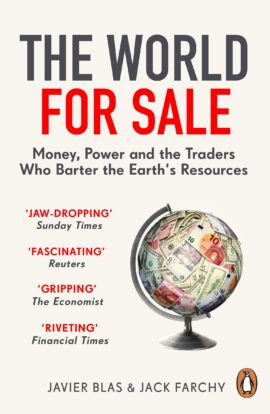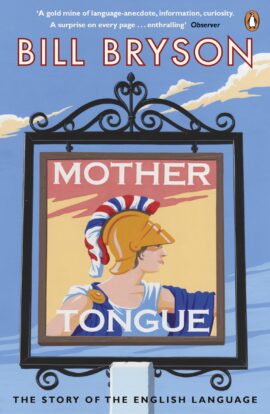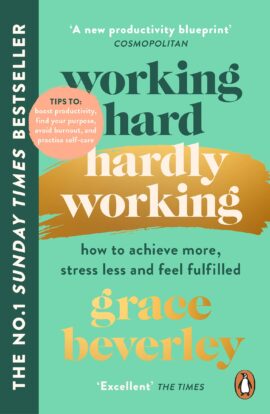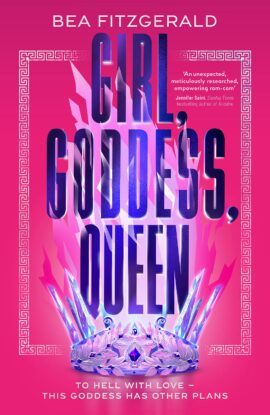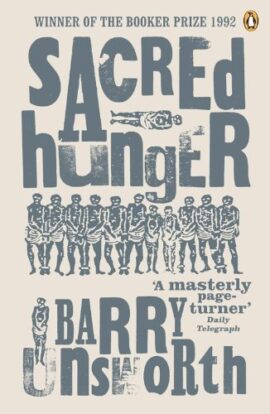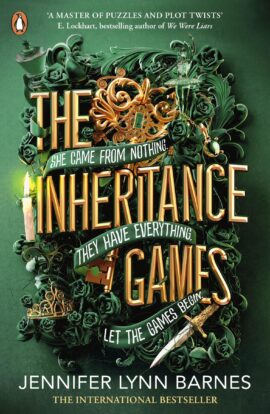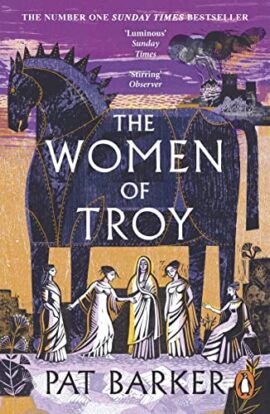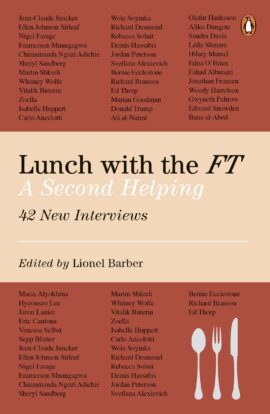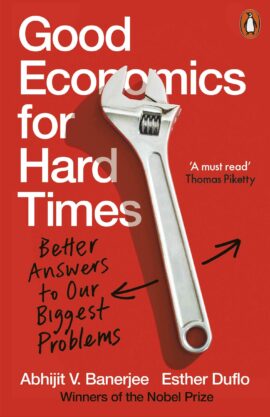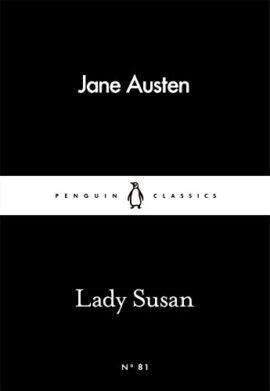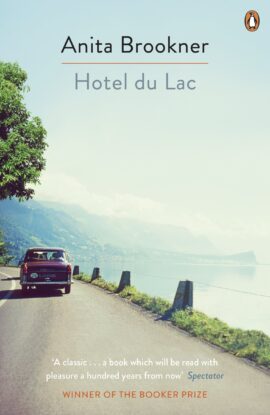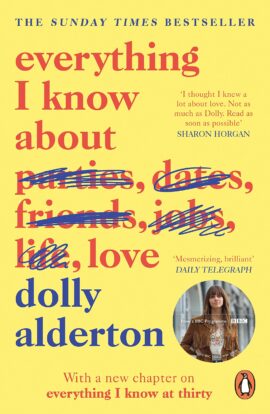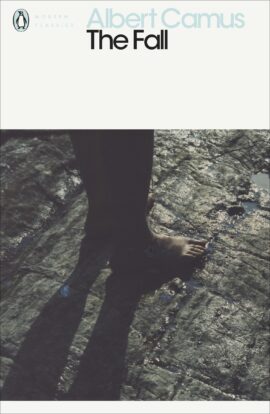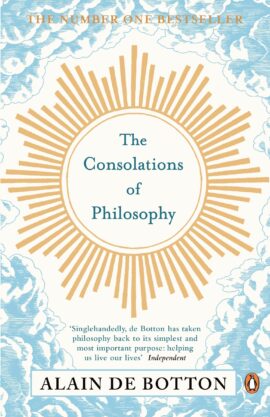Masters of Mankind: Essays and Lectures, 1969-2013
In this collection of essays from 1969-2013, many in book form for the first time, Noam Chomsky exposes the real nature of state power. With unrelenting logic, he holds the arguments of empire up to critical examination and shatters the myths of those who protect the power and privilege of the few against the interests and needs to the many.Covering like 'Human Intelligence and the Environment', 'Terror, Justice and Self-Defence' and 'The Welfare-Warfare state', this is an indispensable compilation of searing insights into the state of our modern world.In this collection of essays from 1969-2013, many in book form for the first time, Noam Chomsky exposes the real nature of state power. With unrelenting logic, he holds the arguments of empire up to critical examination and shatters the myths of those who protect the power and privilege of the few against the interests and needs to the many.Covering like 'Human Intelligence and the Environment', 'Terror, Justice and Self-Defence' and 'The Welfare-Warfare state', this is an indispensable compilation of searing insights into the state of our modern world.'Arguably the most important intellectual alive' New York Times on Noam Chomsky'Noam Chomsky is a global phenomenon . . . he may be the most widely read American voice on the planet today' NYT Book Review'Will there ever again be a public intellectual who commands the attention of so many across the planet?' New Statesman'The west's most prominent critic of US imperialism . . . the closest thing in the English-speaking world to an intellectual superstar' Guardian
Illegitimate Authority: Facing the Challenges of Our Time
'One of the greatest, most radical public thinkers of our time' Arundhati RoyIn these incisive interviews, Chomsky addresses the urgent questions of this tumultuous time, speaking to the deterioration of democracy in the United States and rising tensions globally.He examines the crumbling of the social fabric and the fractures of the Biden era, including the halting steps toward a Green New Deal, the illegitimate authority of the Supreme Court, in particular its decision to overturn Roe v. Wade, and the ongoing fallout from COVID-19. Chomsky also untangles the roots of the War in Ukraine, the diplomatic tensions among the United States, China, and Russia, and considers the need for climate action on an international scale.Illegitimate Authority exposes those who wield power in their own self-interest and plots framework for how we can stand together and fight against injustice.'The West's most prominent critic of US imperialism . . . the closest thing in the English-speaking world to an intellectual superstar' Guardian'Will there ever again be a public intellectual who commands the attention of so many across the planet?' New Statesman
Jane Eyre (Penguin Clothbound Classics)
Part of Penguin's beautiful hardback Clothbound Classics series, designed by the award-winning Coralie Bickford-Smith, these delectable and collectible editions are bound in high-quality colourful, tactile cloth with foil stamped into the design. Charlotte Brontë's first published novel, Jane Eyre was immediately recognised as a work of genius when it appeared in 1847. Orphaned into the household of her Aunt Reed at Gateshead, subject to the cruel regime at Lowood charity school, Jane Eyre nonetheless emerges unbroken in spirit and integrity. How she takes up the post of governess at Thornfield Hall, meets and loves Mr Rochester and discovers the impediment to their lawful marriage are elements in a story that transcends melodrama to portray a woman's passionate search for a wider and richer life than that traditionally accorded to her sex in Victorian society.
White Holes
A mesmerizing trip to the strange new world of white holes, from Carlo Rovelli, the bestselling author of Seven Brief Lessons on PhysicsLet us journey, with beloved physicist Carlo Rovelli, into the heart of a black hole. Let us slip beyond its boundary, the horizon, and tumble - on and on - down this crack in the universe. As we plunge, we'll see geometry fold, we'll feel the equations draw tight around us. Eventually, we'll pass it: the remains of a star, deep and dense and falling further far. And then - the bottom. Where time and space end, and the white hole is born . . .With lightness and magic, here Rovelli traces the ongoing adventure of his own cutting-edge research, of the uncertainty and joy of going where we've not yet been. Guiding us to the edge of theory and experiment, he invites us to go beyond, to experience the fever and the disquiet of science. Here is the extraordinary life of a white hole.
Amazing Muslims Who Changed The World
Do you think you know who first thought of the theory of evolution?Have you ever wondered who created the oldest university in the world?Is Joan of Arc is the only rebel girl who led an army that you've heard of?If so, then you need this stunningly illustrated treasure trove of iconic and hidden amazing Muslim heroes!You'll find people you might know, like Malala Yousafzai, Sir Mo Farah and Muhammad Ali, as well as some you might not, such as:Hasan Ibn Al-Haytham: the first scientist to prove theories about how light travels, hundreds of years before Isaac Newton.Sultan Razia: a fearsome female ruler.G. Willow Wilson: the comic book artist who created the first ever Muslim Marvel character.Ibtihaj Muhammad: the Olympic and World Champion fencer and the first American to compete in the games wearing a hijab.Noor Inayat Khan: the Indian Princess who became a British spy during WWII.There are so many more amazing Muslim men and women who have changed our world, from pirate queens to athletes, to warriors and mathematicians. Who will your next hero be?
Mother Tongue: The Story of the English Language
More than 300 million people in the world speak English and the rest, it sometimes seems, try to...' Only Bill Bryson could make a book about the English language so entertaining. With his boundless enthusiasm and restless eye for the absurd, this is his astonishing tour of English. From its mongrel origins to its status as the world's most-spoken tongue: its apparent simplicity to its deceptive complexity: its vibrant swearing to its uncertain spelling and pronunciation, Bryson covers all this as well as the many curious eccentricities that make it as maddening to learn as it is flexible to use. Bill Bryson's classic "Mother Tongue" is a highly readable and hilarious tale of how English came to be the world's language.
Working Hard, Hardly Working
THE #1 SUNDAY TIMES BESTSELLER'Excellent.' The Times'Offers a fresh take on how to create your own balance, be more productive and feel fulfilled in the high-pressure social media age.' Cosmopolitan, 12 BEST NEW BOOKS TO READ'Serves some serious inspiration for the business-minded.' Bustle, TOP DEBUT BOOKS OF 2021'Pinpoints and unpacks the confusing and impossible messages we are all fed about modern work, how we are supposedly meant to be "nailing" all areas of our life all at once.' Emma Gannon________________We all know the pressure of feeling like we should be grinding 24/7 while simultaneously being told that we should 'just relax' and take care of ourselves, like we somehow have to decide between success and sanity. But in today's complex working world, where every hobby can be a hustle and social media is the lens through which we view ourselves and others, this seemingly impossible choice couldn't be further from our reality.In Working Hard, Hardly Working, entrepreneur and self-proclaimed 'lazy workaholic' Grace Beverley challenges this unrealistic and unnecessary split, and offers a fresh take on how to create your own balance, be more productive and feel fulfilled.________________A BOOK TO HELP YOU:Create your own Productivity Method: Work smart and do more of what you loveMake your routine work for you: Optimise your habits and reap the benefitsUnderstand your value: Get into your flow and enjoy your everydayEngage in effective self-care: How stepping back can help you move forwards
Girl, Goddess, Queen: A Hades and Persephone fantasy romance from a growing TikTok superstar
To hell with love, this goddess has other plans...Thousands of years ago, the gods told a lie: how Persephone was a pawn in the politics of other gods. How Hades kidnapped Persephone to be his bride. How her mother, Demeter, was so distraught she caused the Earth to start dying.The real story is much more interesting.Persephone wasn't taken to hell: she jumped. There was no way she was going to be married off to some smug god more in love with himself than her.Now all she has to do is convince the Underworld's annoyingly sexy, arrogant and frankly rude ruler, Hades, to fall in line with her plan. A plan that will shake Mount Olympus to its very core.But consequences can be deadly, especially when you're already in hell . . .A fierce, fresh and enormously fun YA fantasy re-imagining from a growing TikTok superstar.
Sacred Hunger
WINNER OF THE 1992 BOOKER PRIZE 'Gripping . . . SACRED HUNGER covers a period between 1752 and 1765 . . . it concerns the entangled and conflicted fortunes of two cousins: Erasmus Kemp, the son of a Lancashire merchant, and Matthew Paris, a scholar and surgeon just released from prison for "denying Holy Writ" . . . the Liverpool Merchant is the vessel on which the whole of the novel hinges, and it carries the reader deep into the history of man's iniquitous greed . . . AS REGARDS ITS DRAMATIC BREADTH AND ENERGY, NO RECENT DOMESTIC NOVEL HAS COME WITHIN A MILE OF IT' - Anthony Quinn in the Independent
The Inheritance Games
An utterly addictive and twisty thriller, full of dark family secrets and deadly stakes. Perfect for fans of One of Us is Lying and Knives Out.She came from nothing.Avery has a plan: keep her head down, work hard for a better future.Then an eccentric billionaire dies, leaving her almost his entire fortune. And no one, least of all Avery, knows why.They had everything.Now she must move into the mansion she's inherited.It's filled with secrets and codes, and the old man's surviving relatives - a family hell-bent on discovering why Avery got 'their' money.Now there's only one rule: winner takes all.Soon she is caught in a deadly game that everyone in this strange family is playing.But just how far will they go to keep their fortune?'A fantastic rollercoaster of a book! We Were Liars meets The Da Vinci Code. I loved it!' Kat Ellis, author of Harrow Lake'A thrilling blend of family secrets, illicit romance and a high-stakes treasure hunt . . . The nonstop twists kept me guessing until the very last page!' Katharine McGee, New York Times bestselling author of American Royals'One of YA's more reliably twisty and brilliant thriller authors is back with a brand new series that's every bit as impossible to put down as her others' Buzzfeed
The Women of Troy
THE SUNDAY TIMES BESTSELLERFollowing her bestselling, critically acclaimed The Silence of the Girls, Pat Barker continues her extraordinary retelling of one of our greatest myths.'Myth for a MeToo age. Pat Barker returns to Homer in this gory but unexpectedly uplifting novel' Sunday TimesTroy has fallen. The Greeks have won their bitter war. They can return home as victors - all they need is a good wind to lift their sails. But the wind has vanished, the seas becalmed by vengeful gods, and so the warriors remain in limbo - camped in the shadow of the city they destroyed, kept company by the women they stole from it.The women of Troy.Helen - poor Helen. All that beauty, all that grace - and she was just a mouldy old bone for feral dogs to fight over.Cassandra, who has learned not to be too attached to her own prophecies. They have only ever been believed when she can get a man to deliver them.Stubborn Amina, with her gaze still fixed on the ruined towers of Troy, determined to avenge the slaughter of her king.Hecuba, howling and clawing her cheeks on the silent shore, as if she could make her cries heard in the gloomy halls of Hades. As if she could wake the dead.And Briseis, carrying her future in her womb: the unborn child of the dead hero Achilles. Once again caught up in the disputes of violent men. Once again faced with the chance to shape history.Masterful and enduringly resonant, ambitious and intimate, The Women of Troy continues Pat Barker's extraordinary retelling of one of our greatest classical myths, following on from the critically acclaimed The Silence of the Girls.'Readers turn to Barker's novels for their plain truths and clear-eyed sense of our history and creation stories. But the sombre clarity of her writing is offset by a luminous wisdom' Sunday Times'The Women Of Troy's immediate beauty is its accessibility and Barker's precise, elegant writing' Metro'Barker has always looked on the world with the combination of a cold eye and a sympathetic understanding. Her characterisation is sharp, her sympathy deep' ipaper
The Silence of The Girls
Queen Briseis has been stolen from her conquered homeland and given as a concubine to a foreign warrior. The warrior is Achilles: famed hero, loathed enemy, ruthless butcher, darkly troubled spirit. Briseis's fate is now indivisibly entwined with his.No one knows it yet, but there are just ten weeks to go until the Fall of Troy, the end of this long and bitter war. This is the start of The Iliad: the most famous war story ever told. The next ten weeks will be a story of male power, male ego, male violence. But what of the women? The thousands of female slaves in the soldiers' camp - in the laundry, at the loom, laying out the dead? Briseis is one of their number - and she will be our witness to history.
Lunch with the FT: A Second Helping
Lunch with the Financial Times has been a permanent fixture in the Financial Times for almost 25 years, featuring presidents, film stars, musical icons and business leaders from around the world. The column is now as well-established institution which has reinvigorated the art of conversation in the convivial, intimate environment of a long boozy lunch. On its 25th anniversary, Lunch with the Financial Times 2 will showcase the most entertaining, incisive and fascinating interviews from the past five years including those with Donald Trump, Sheryl Sandberg, Richard Branson, Yanis Varoufakis, Zadie Smith, Nigel Farage, Russell Brand and David Guetta, illustrated in full colour with James Ferguson's famous portraits.
Good Economics for Hard Times: Better Answers to Our Biggest Problems
FROM THE WINNERS OF THE 2019 NOBEL PRIZE IN ECONOMICS'Wonderfully refreshing . . . A must read' Thomas PikettyIn this revolutionary book, prize-winning economists Abhijit V. Banerjee and Esther Duflo show how economics, when done right, can help us solve the thorniest social and political problems of our day. From immigration to inequality, slowing growth to accelerating climate change, we have the resources to address the challenges we face but we are so often blinded by ideology.Original, provocative and urgent, Good Economics for Hard Times offers the new thinking that we need. It builds on cutting-edge research in economics - and years of exploring the most effective solutions to alleviate extreme poverty - to make a persuasive case for an intelligent interventionism and a society built on compassion and respect. A much-needed antidote to polarized discourse, this book shines a light to help us appreciate and understand our precariously balanced world.
Lady Susan (Penguin Little Black Classics)
'Of what a mistake were you guilty in marrying a Man of his age! - just old enough to be formal, ungovernable and to have the Gout - too old to be agreable, and too young to die.' The scheming and unscrupulous Lady Susan is unlike any Austen heroine you've met in this fascinating early novella. One of 46 new books in the bestselling Little Black Classics series, to celebrate the first ever Penguin Classic in 1946. Each book gives readers a taste of the Classics' huge range and diversity, with works from around the world and across the centuries - including fables, decadence, heartbreak, tall tales, satire, ghosts, battles and elephants.
Hotel Du Lac
Winner of the Booker Prize 'The Hotel du Lac was a dignified building, a house of repute, a traditional establishment, used to welcoming the prudent, the well-to-do, the retired, the self-effacing, the respected patrons of an earlier era' Into the rarefied atmosphere of the Hotel du Lac timidly walks Edith Hope, romantic novelist and holder of modest dreams. Edith has been exiled from home after embarrassing herself and her friends. She has refused to sacrifice her ideals and remains stubbornly single. But among the pampered women and minor nobility Edith finds Mr Neville, and her chance to escape from a life of humiliating loneliness is renewed . . . 'A classic . . . a book which will be read with pleasure a hundred years from now' Spectator
Everything I Know About Love
THE SUNDAY TIMES BESTSELLER WITH A NEW CHAPTER ON TURNING THIRTY*Winner of Autobiography of the Year at the National Book Awards 2018**Shortlisted for the Waterstones Book of the Year 2018*Award-winning journalist Dolly Alderton survived her twenties (just about) and in Everything I Know About Love, she gives an unflinching account of the bad dates and squalid flat-shares, the heartaches and humiliations, and most importantly, the unbreakable female friendships that helped her to hold it all together. Glittering with wit, heart and humour, this is a book to press into the hands of every woman who has ever been there or is about to find themselves taking that first step towards the rest of their lives.***************'Alderton is Nora Ephron for the millennial generation' Elizabeth Day'Steeped in furiously funny accounts of one-night stands, ill-advised late-night taxi journeys up the M1, grubby flat-shares and the beauty of female friendships, as Alderton joyfully booze-cruises her way through her twenties' Metro'Deeply funny, sometimes shocking, and admirably open-hearted and optimistic' Daily Telegraph'The book we will thrust into our friends' hands . . . that will help heal a broken heart. Alderton's wise words can resonate with women of all ages. She feels like a best friend and your older sister all rolled into one and her pages wrap around you like a warm hug' Evening Standard'A sensitive, astute and funny account of growing up millennial' Observer'I loved its truth, self awareness, humour and most of all, its heart-spilling generosity' Sophie Dahl 'Alderton proves a razor-sharp observer of the shifting dynamics of long term female friendship' Mail on Sunday'It's so full of life and laughs - I gobbled up this book. Alderton has built something beautiful and true out of many fragments of daftness' Amy Liptrot
The Modern Classics Myth of Sisyphus (Penguin Modern Classics)
The summation of the existentialist philosophy threaded throughout all his writing, Albert Camus' The Myth of Sisyphus is translated by Justin O'Brien with an introduction by James Wood in Penguin Classics. In this profound and moving philosophical statement, Camus poses the fundamental question: is life worth living? If human existence holds no significance, what can keep us from suicide? As Camus argues, if there is no God to give meaning to our lives, humans must take on that purpose themselves. This is our 'absurd' task, like Sisyphus forever rolling his rock up a hill, as the inevitability of death constantly overshadows us. Written during the bleakest days of the Second World War, The Myth of Sisyphus (Le Mythe de Sisyphe) argues for an acceptance of reality that encompasses revolt, passion and, above all, liberty. This volume contains several other essays, including lyrical evocations of the sunlit cities of Algiers and Oran, the settings of his great novels The Outsider and The Plague. Albert Camus (1913-60) is the author of a number of best-selling and highly influential works, all of which are published by Penguin. They include The Fall, The Outsider and The First Man. Awarded the Nobel Prize for Literature in 1957, Camus is remembered as one of the few writers to have shaped the intellectual climate of post-war France, but beyond that, his fame has been international. If you enjoyed The Myth of Sisyphus, you might like Camus' The Outsider, also available in Penguin Modern Classics. 'Camus could never cease to be one of the principal forces in our domain, nor to represent, in his own way, the history of France and of this century' Jean-Paul Sartre
The Fall
Jean-Baptiste Clamence is a soul in turmoil. Over several drunken nights he regales a chance acquaintance with his story. From this successful former lawyer and seemingly model citizen a compelling, self-loathing catalogue of guilt, hypocrisy and alienation pours forth. "The Fall" (1956) is a brilliant portrayal of a man who has glimpsed the hollowness of his existence. But beyond depicting one man's disillusionment, Camus's novel exposes the universal human condition and its absurdities - and our innocence that, once lost, can never be recaptured.










